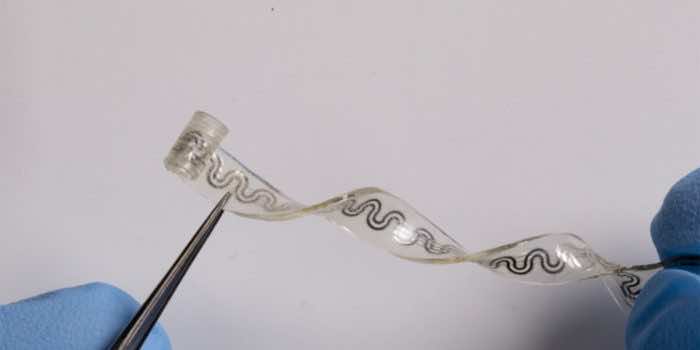Do you want to get rid of the pain after any surgery? Then this new device is surely made for you. It has been reported that researchers at Roger’s lab at Northwestern University have finally completed the development of a small but incredible implanting device that vanishes your pain after an operation or surgery without using any drugs or opioids that may affect your body.

It is to be noted that to bring this breakthrough to the market, the first concept of a “transient electronic device” was introduced by Roger’s lab in 2012. In 2018, they developed a device for nerve regeneration known as a “biodegradable implant,” and then in 2021, a “transient pacemaker” was inaugurated. All of these devices can automatically dissolve into the body fluids without the need for “surgical extrication,” and that’s what this new and water-soluble device is based on.
John A. Rogers, who was the leading body of this project, said, “Although opioids are extremely effective, they are also extremely addictive. As engineers, we are motivated by the idea of treating pain without drugs—in ways that can be turned on and off instantly, with user control over the intensity of relief. The technology reported here exploits the mechanism that causes your fingers to feel numbers when cold. Our implant demonstrates in animal model studies that this effect can be produced in a programmable way, directly and locally to targeted nerves, even those deep within surrounding soft tissues. “
The device is particularly suitable for those patients who undergo routine surgeries or operations, as it would otherwise be very traumatic for them to go through post-operation pain. The device is implanted around the impaired nerves of the patient by the surgeons, and the mixture will then automatically dissolve into the body fluid after a few days or weeks.
Let’s move towards the working principle of the device. The device contains a liquid coolant called
“perfluoropentane” in one channel and dry nitrogen in the second channel. As soon as both of these materials flow through the affected location, the liquid would immediately be evaporated after a chemical reaction by reaching the affected nerve, leaving behind a cooling effect. In this way, the cooling process will eventually block the signals of pain to the brain.

Moreover, there is also an external pump connected to the implanted device which assists in activating or deactivating the device. It also controls the intensity of the device and keeps the cooling process within a reasonable limit because too much cooling would negatively affect the tissues in the nerves. As Rogers said, “By monitoring the temperature at the nerve, the flow rates can be adjusted automatically to set a point that blocks pain in a reversible, safe manner. On-going work seeks to define the full set of time and temperature thresholds below which the process remains fully reversible. “


